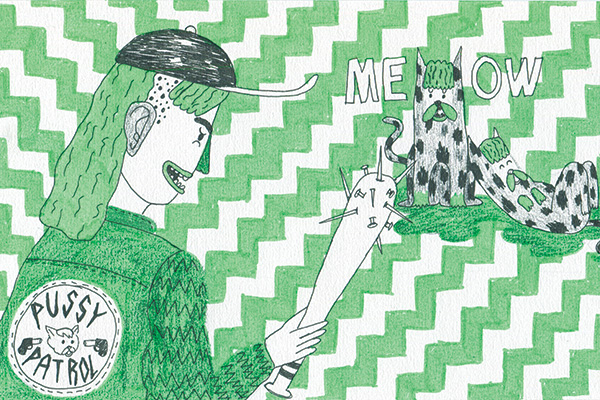Feral Cats to Be Sent to Heaviside Layer
The committee has met once so far. Members include Otago Zoology lecturer Dr Yolanda van Heezik as well as people representing the SPCA, Pet Fix and Dunedin Cat Rescue. The Otago Peninsula Biodiversity Group also has an interest in the proceedings, saying that people on the Peninsula are carrying out “amazing biodiversity work that can be severely damaged by cats.”
The Otago Daily Times claims that “a dramatic plea [was made] at a public forum from Dunedin woman Diane Yeldon, who suggested forming a posse to go around the city at night shooting feral cats.” Wilson, however, did not believe that this was the answer, pointing out that feral cats are extremely hard to catch and reminding attendees that the committee is currently just a “working group focussing on ideas.”
Feral cats, Wilson explained, are by defintion those that are at least second-generation wild, and have never been domesticated. Committee members describe them as “hard to catch and rarely ever seen by humans.” They are, in other words, “in full-time stealth mode.”
The SPCA cannot take in feral cats unless they are adopted at under five weeks of age. Any later and it is impossible to domesticate them, and they simply “pass on diseases to the domestic pets.”
Online discussion over this “very emotional issue” saw residents expressing their concerns. “Imagine the uproar when someone’s poor pusskins is killed accidentally,” said one contributer to the debate.
Maria Aiau, however, begrudges the cat love, saying “my cat is 17 years old, and I for one don’t want another.” Another resident pointed out that “we don’t have a ‘Save the Flies’ campaign, [and] they also happen to be God’s creatures.”
There are many issues up for discussion, including “what happens to the rat and mouse population?” Possible resolutions include spaying, neuter and release, and Timm traps. Timm traps, which are used near homes, require cats to put their heads through a small hole in order to enter a space in which food has been laid as bait. They have proven effective in catching possums, but Wilson believes that cats are more switched on.
Wilson and the SPCA suggest that the best action residents can take is neutering their cats.




